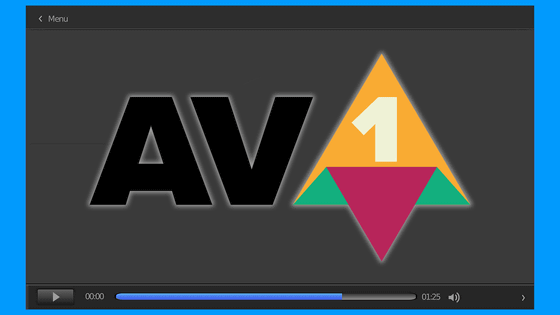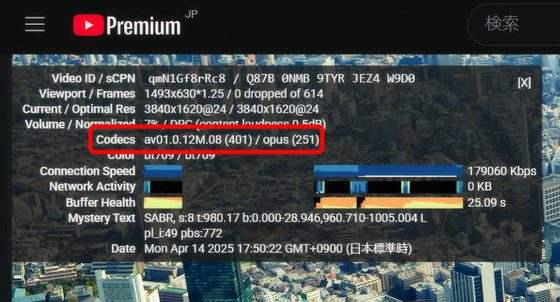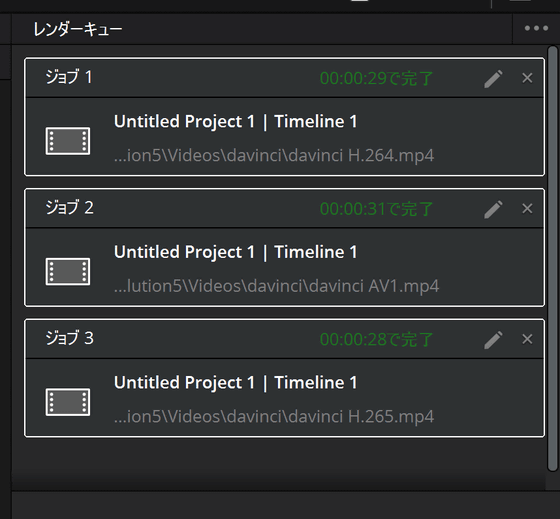Why is the royalty-free video compression codec 'AV1,' which has improved compression efficiency, not so popular?

' AV1 ' is a video compression codec promoted by major tech companies such as Netflix, YouTube, and Google. It is expected to be about 30% more efficient than conventional
AV1 could improve streaming, so why isn't everyone using it? | The Verge
https://www.theverge.com/tech/635020/av1-streaming-netflix-youtube-google-adoption
AV1 was developed by the Alliance for Open Media (AOMedia), which was founded in 2015 by Netflix, Google, Amazon, Meta, Microsoft, and others, and was officially released in 2018.
Google and Netflix's video codec 'AV1' officially released, expected to popularize 4K streaming - GIGAZINE

AV1 has about 30% better compression efficiency than HEVC and VP9, and is considered an ideal technology for streaming services because it can deliver higher quality video with low bandwidth. AV1 is also royalty-free, and unlike AVC (H.264) and HEVC, which require license fees, it does not require patent fees, making it easy for companies to adopt.
In fact, YouTube began implementing AV1 in 2018, and Netflix and Amazon Prime Video added support for AV1 in 2021. AV1 is also being implemented in Instagram Reels, Microsoft Teams screen sharing, Discord, Twitch, etc. In addition, major browsers Google Chrome , Safari , Microsoft Edge , and Firefox now support AV1.

However, The Verge cites 'high computational load' and 'complexity of encoding and decoding' as reasons why AV1 is not widespread. While AV1 can achieve high-quality video at a low bitrate, it can take several times longer than VP9 or H.264 to achieve the same image quality, and especially software-based encoding can take so long that it is not practical for general use. In addition, the decoding process during playback is also highly demanding, and smooth playback may be difficult on older PCs and low-spec smartphones. In fact, GPUs and smartphones that can play AV1 in hardware are limited to relatively new models from the 2020s onwards.
'To get the best performance from AV1, you have to do much more complex encoding, but it also makes the decoding more complex, which is a burden on the user,' said Larry Pearlstein, an associate professor in the Department of Electrical and Computer Engineering at The College of New Jersey.

According to AOMedia, about 95% of Netflix's content is encoded in AV1, while only about 50% of YouTube's content is encoded in AV1. The Verge points out that 'it shows that content and playback environments are difficult to develop at the same time.' Professor Hari Karba of the Department of Electrical Engineering and Computer Science at Florida Atlantic University commented, 'Who should build this technology before AV1 content exists, or is there a sufficient environment to play that content? In the end, it's a question of which came first, the chicken or the egg.'
Another reason why AV1 has not been widely adopted is that new codecs have also appeared in addition to AV1. For example, VVC (H.266), standardized by MPEG and VCEG, has a compression efficiency that is about 50% higher than HEVC. Since VVC is not royalty-free, the barrier to adoption is much higher than AV1, but technically, its compression efficiency is superior to AV1, making it a standard that can compete with AV1.
Introducing the next-generation video compression standard 'H.266/VVC' that can reduce file size by 50% with the same image quality as 'H.265/HEVC' - GIGAZINE

In addition, AV1 is attracting attention as a next-generation video compression codec with a royalty-free policy, but there are some problems with the premise of 'royalty-free.' AOMedia has emphasized that a major advantage of AV1 is that it does not require a license fee, but in reality, companies and organizations that hold patents related to AV1 have begun to demand royalties, and the legal stability of the codec remains uncertain.
In fact, it was announced that a new patent pool would be established in January 2025 and that licensing fees would begin to be collected for AV1-related technologies. In response, AOMedia countered that it had already sorted out the patent licensing terms and would not incur additional royalties. In addition, the European Union (EU) began an investigation into AOMedia's licensing policy in 2022, arguing that the monopoly structure could hinder other technological innovations. This investigation was closed in 2023 due to priorities, but the issue has not been completely resolved.
Experts say that the field of video compression technology is so intertwined with patents that it is called the 'IP Thicket,' and that even new technologies run the risk of unintentionally infringing on existing patents. AV1 is no exception, and such legal risks could become a barrier to companies adopting it in the future.
Despite this uncertainty, AOMedia and its adopters are promoting AV1 as the future of online streaming and working on its potential successors. 'AV1 will probably be here forever,' said Pierre-Anthony Lemieux, executive director of AOMedia. 'But our members are working on the next big thing, and we hope to have something to announce in the second half of 2025.'
Related Posts:
in Software, Web Service, Posted by log1i_yk







